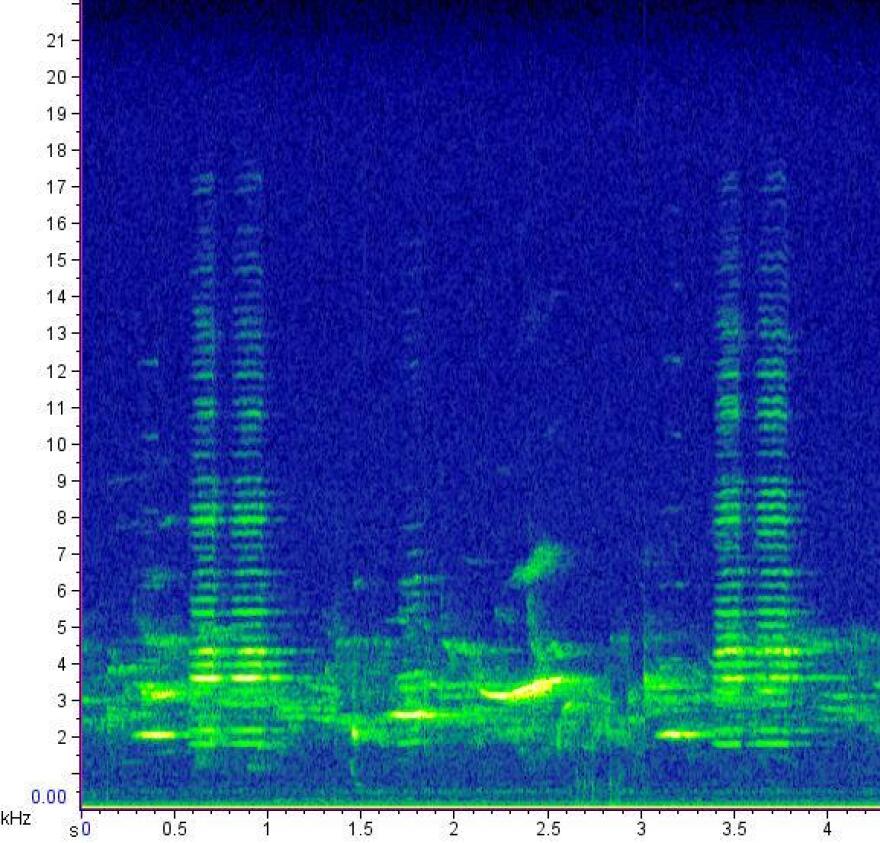This is the first in a series of stories about Hawaiian songbirds, their environment and their conservation. They are based on "Manu Minute," a new weekly segment on HPR's The Conversation. Have a question about Hawaiian birds or a comment on this series? Call our talkback line at 808-792-8217 and leave us your comment or question, name and email address, or email us at news@hawaiipublicradio.org with the subject line "Manu Minute."

The scarlet honeycreeper, also known as the 'i'iwi, gets its name from the bright red plumage on its body. Native Hawaiians valued the bird for its vivid color, and often incorporated the feathers of the 'i'iwi into elaborate ahu'ula (feathered cloaks) and mahiole (feathered helmets) for ali'i.
While an adult scarlet honeycreeper is easy to spot, juvenile 'i'iwi have more subdued plumages of orange, yellow, and brown, which helps them to camouflage as they learn their way through Hawai'i's native forests.

Once among the most common native birds across the Hawaiian islands, this distinctive honeycreeper has started to disappear. In 2017, the 'i'iwi were listed as Threatened under the Endangered Species Act (ESA). Mosquito-borne avian malaria is the primary culprit in the 'i'iwi population decline, but the little bird has also faced dramatic habitat losses as climate change and fungal pathogens shrink native 'ohi'a forests.
For birders on the lookout for 'i'iwi, you will likely hear them before you see them. The 'i'iwi have a huge repertoire of songs, the most famous of which sounds a bit like a squeaky gate.




